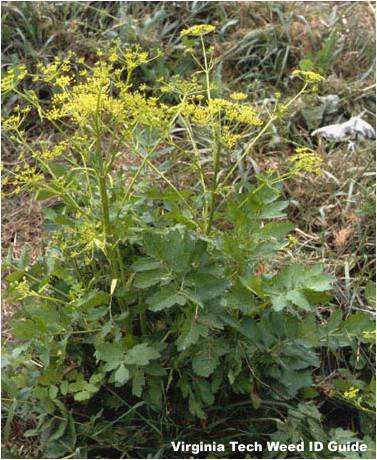Weed of the Month: Wild Parsnip

Scientific name: Pastinaca sativa L.
Life Cycle: Biennial
Origin: Eurasia
Poisonous: Yes (foliage), skin photosensitivity
Wild parsnip is distributed widely across the United States and Canadian Provinces and frequently grows along fencerows and roadsides. Depending on the location, seeds germinate in the fall or early spring and plants flower from June through July.
Flowers are yellow or yellow with reddish tinge. This erect, growing plant can reach 6 feet in height. The leaves alternate on the stem and are coarsely toothed. Stems are stout and hollow, often with ridges. Roots branch from a tuberous taproot and are edible
Create a free account with TheHorse.com to view this content.
TheHorse.com is home to thousands of free articles about horse health care. In order to access some of our exclusive free content, you must be signed into TheHorse.com.
Start your free account today!
Already have an account?
and continue reading.
Written by:
University of Kentucky's College of Agriculture, Food, and Environment
Related Articles
Stay on top of the most recent Horse Health news with















